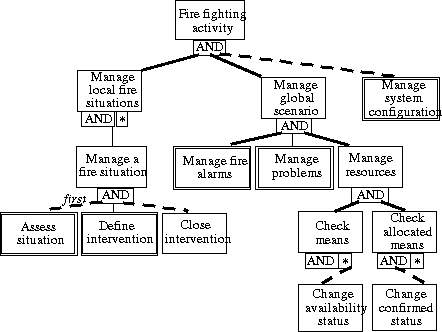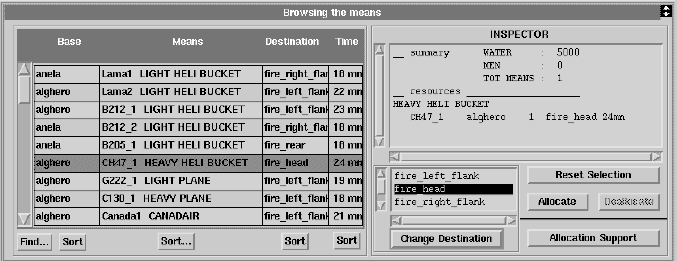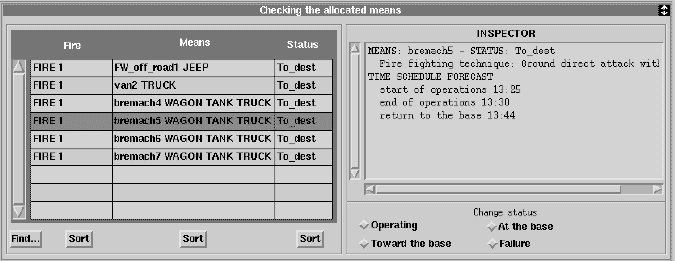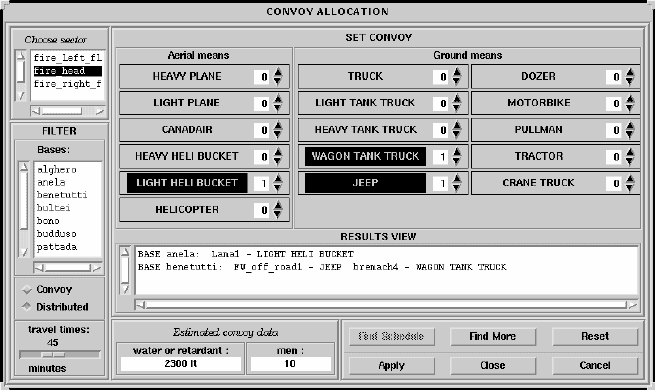Issue
Article
Vol.28 No.3, July 1996
Article
Issue
Issue |
Article |
Vol.28 No.3, July 1996 |
Article |
Issue |
A task-centred approach to systems design and evaluation is presented. In particular, task analysis and task modelling are described as major human factors tools for a structured user-centred and task-centred design methodology. It will be shown how these techniques can be exploited throughout the development process, and their beneficial effects in terms of software usability.
The method is presented discussing the experience of the Esprit Project CHARADE, an integrated system for handling environmental emergencies. Starting from the notion that usability means "usable to perform some tasks", the role of task analysis and task scenario and their contribution to system design and evaluation are discussed.
The purpose of the user interface is to make a system usable for the user. Over the last fifteen years, the concept of usability has reached a high degree of consensus among users and designers, and many approaches and techniques have been developed to measure and evaluate usability (see Lindgaard, 1994). Nevertheless usability is still a difficult design objective to achieve. It involves adapting the system to the human beings who use it, raising psychological issues on human memory, perception, conceptualisation.
Different definitions of usability have been discussed by researchers in human-computer interaction (see Shackel, 1990). However, the key point on usability is that it is defined in relation to specified users performing specified tasks. Therefore, we need to define design techniques and methods for understanding users and tasks, and translating this understanding in the development of interactive systems.
The approach to design that better pursues the objective of usability is the user-centred design (Norman & Draper, 1986). As well is known, the key principle of the user-centred design is to place the users at the centre of the design activities: users' tasks, user participation and user evaluation summarise the essence of the approach.
In what follows, we propose an implementation of the user-centred design in terms of task-centred design (Lewis & Rieman, 1993). Task-centred design is a structured process based on the analysis and modelling of the tasks of the user, and the exploitation of task modelling output for the system design and evaluation. The approach is proposed as a general methodological framework for the design, the development and the evaluation of interactive systems. We discuss the beneficial bridging effects of task modelling throughout the development life cycle presenting the experience of the Esprit Project CHARADE. CHARADE (an acronym for "Combining Human Assessment and Reasoning Aids for Decision making in environmental Emergencies") is a project enacted in the IIIrd Framework Program of the European Community within a consortium composed by seven organisations(1). It is a software platform for the development of decision support systems in the field of environmental emergencies, whose primary application domain is forest fire fighting (Ricci, Mam, Marti, Normand, & Olmo, 1994).
The main aspects of our experience are reported highlighting how task analysis and modelling can be shared resources for the entire development process. We propose that development processes based on rapid prototyping and multiple design-test cycles would benefit from a structured approach based on task modelling, for reducing and better controlling the number of cycles and improving traceability of design decisions (Marti & Normand, in press). Task Analysis and Task Modelling are considered as a major human factors tool for a structured user-centred and task-centred design methodology. This paper describes their effective exploitation during the development process of CHARADE, highlighting the methodological steps that allow a direct contribution to the design and evaluation. In particular we discuss steps in the interface design from two perspectives: the functional perspective and the interaction perspective, i.e. presentation issues and dialog design.
The application of this approach allowed to clarify interest and limitations of task analysis in a real size project, and to refine a task-based system development method.
The functional perspective is concerned with the support that the system offers to the user tasks (Johnson, 1992). Usability and thoroughness are in this respect a fundamental matter of concern.
The functional design of an interface is difficult because the designer has to define precisely the objectives of the design, and therefore the users who are likely to use the system, which tasks will be allowed using the system, and the context in which the activity will be performed. But the real burden of design lies in the cyclic relationship between the new system supporting a certain set of tasks and the changes that the use of the system itself will produce on those tasks.
What happens is that the old tasks influence the design of new artifacts, and the new artifacts influence the nature of tasks by allowing people to carry out more and different tasks than were previously possible (Carroll, 1990). Task analysis can be an answer to this design need providing methods to understand the nature of users' tasks in-depth and to define the system functionality able to support them (Diaper, 1989).
The task modelling notation used in CHARADE is inspired from MAD (Scapin & Pierret-Golbreich, 1989) and TKS (Johnson & Johnson, 1991); it consists in a graphical notation to represent task graphs, i.e., a task taxonomy representing the goal structure of the tasks. This structure conveys a task/sub-task decomposition, defined in terms of temporal and logical constraints among tasks; triggering conditions; loops etc. Each task in the graphs is moreover described in a task template collecting functional, operational, pragmatic and relational characteristics of the task. Other information about non-functional requirements of tasks like duration, interruptibility, reversibility, frequency are also specified as natural language descriptions in the task template.
Other relevant elements of the task modelling are:
Both roles and objects are further described in role and object templates containing information about relations among roles, objects' data attributes, and actions that may be applied to the objects. This object-oriented aspect of task analysis can be a natural link with object-oriented analysis methods, therefore with the system software engineering.
A Task Editor tool was developed, embodying this notation that was used throughout the development process(2) (Normand & Mam, 1993).
In CHARADE two steps of task analysis were performed: a pre-design task analysis (pre-design TA) and a design task analysis (design-TA).
Pre-design activities are usually focused on the characterisation of the problem domain, and the identification of the requirements for the target system. Therefore, in CHARADE the pre-design task analysis was connected with the activity presently performed in the command and control operational centres for emergencies. Steps in pre-design TA can be described as follows:
The generalised model of the existing tasks obtained from pre-design TA along with the analysed requirements and application domain knowledge, are then inputs to the system specification phase. Design activities start at this point, resulting in the full specification of the target system. They include:
Task allocation is one of the main technique for design TA. Within each task, actions are allocated to either the computer or the users, or both users and computer. Heuristic or associative tasks as well as tasks requiring initiative or judgement are usually allocated to the users whilst repetitive tasks, calculations or high volume data handling are allocated to the system. Data entry, data retrieval and decision support are examples of mixed tasks in which human and computer interact to achieve an objective. Task allocation produces the task graph (the target task model) of the new system.
In CHARADE, the exploitation of the target task model even reached the software implementation stage of a generic component that takes as input an augmented task model; this runtime task model was used to drive the overall user-system dialogue and to provide the users with a level of feedback on the realisation status of their tasks during a session (Normand, 1993).
The user interface design is concerned with the visual appearance of the interface and the dialog dynamics between user and system.
In the task-based approach adopted in CHARADE, the GUI design developed from three main outputs:
A further main source of inspiration for the GUI design was naturally the users who provided invaluable input to refine design decisions through the evaluation of intermediate prototypes.
The GUI design process in CHARADE was an iterative process based on two main steps: initial design and redesign (see Redmond-Pyle & Moore, 1995). In the initial design the target task model provided the structure and a sound basis for the first prototypes of the interface. For each task in the target task model, graphical objects were designed to support the task according to the view that the users had of the activity to perform. Prototyping and usability evaluation were then used to progressively improve the design until requirements are satisfied.
The redesign process aimed at revising the initial design in order to achieve the desired usability. It was a dynamic process involving iterative evaluations of prototypes with different evaluation techniques.
As stated above, user requirements, target task model and application style guide shaped the initial GUI design of CHARADE.
Pre-design TA, and particularly design TA provided clues as to the required characteristics of the user interface and presentation, matching the following concerns:
In CHARADE, the organisation of the user interface was designed reflecting the structure of the target task model. For example, the high level taxonomy of the tasks and subtasks (representing what the users desire in performing the work), was reflected in the design of the top menu bar of the user interface: for any task the designer created a list of actions (and commands) implemented by the system. The same held for the organisation of physical "workspaces" of the user interface corresponding to conceptual areas of tasks. Starting from the target task model, a top-down approach was followed defining a list of major top-level functions which were then refined in more and more detail. Details inside each workspace were defined checking that all data necessary for performing a given task were provided in the presentation, and that only pertinent elements were directly presented. The grouping of the displayed data was dependent on the relationships between involved tasks. Other aspects of the interface design such as the parallelism among tasks, iterations or interruption in the execution of some tasks were also derived from the structure of the target task model. All messages provided by the system as feedback to particular user actions were adapted to the context of task according to the structure of the task model. As to the exact set of data required or useful for the processing of a given task or dialogue dynamics, these were refined with the users during prototyping and evaluation.
With respect to the form of the display, it naturally depended on the amount and type of the data to be displayed, the target development environment of the system, and the external and the users' expectations and habits. An application style guide was then defined to clearly describe the style standards for the application. Inputs to the definition of the application style guide were the commercially available environment style guide for OSF/Motif (the basic development environment); and the usability requirements for the users of the application. In CHARADE, special attention was paid to the application style guide definition so as to include the set of specific symbols, icons and colours that operators in command and control centers for emergencies are used to handling during fire interventions.
Redesign is driven by usability problems discovered during prototyping or evaluation, or by failure to achieve usability requirements. The redesign process is rather different from the initial design process in that the designer reacts to specific problems or suggestion for change, with emphasis on updating the design in line with those suggestions. Nevertheless redesign can exploit task models as a context for the evaluation.
In CHARADE, task scenarios (Carroll, 1995) were used as testbeds for prototyping and evaluation. The task models developed during the analysis and the design of the system, provided the context for task scenarios.
Each scenario was intended to specify what a user would have to do and to see step-by-step in performing a task using the system (Lewis & Rieman, 1993). Scenarios were represented by textual, pictorial or diagrammatic descriptions of a task or a sequence of exemplar tasks, and served as a basis to consider how the various features of the system would have worked together to accomplish real work.
Many different prototyping techniques were used in CHARADE (Marti, 1995). An interesting experience was made adopting the interactive prototyping technique (Nielsen, 1993), a method based on task scenarios where the user's suggestions are implemented on-line and directly submitted to the design/evaluation/redesign cycle.
The task-driven approach to redesign gave advantages in CHARADE in many respects:
Furthermore, the target task model was a good tool for discussing and making decisions among software engineers, user interface designers and the users involved in the evaluation of the system. Building and checking the target task model allowed to reach a conceptual model of the activity, shared with the users, and a common view of what the Demonstrator would be. In particular, the target task model played a central role when freezing, finalizing and assembling application functions and user interface.
This section describes, with an example, the process used in the GUI design of CHARADE. In particular it describes how the products of the earlier stages in the development process, i.e. user requirements, target task model and the application style guide, were used to design the initial layout and the mechanisms for navigation. The evaluation process is also described to show how defects in design were fed back into successive iterations of redesign and prototyping.
The first step in the process for the initial GUI design is the definition of the main layout of the interface, organised in workspaces, windows, or panes. These graphical objects should support the mental models that the users have of the activity they have to perform with the system, so they should be designed as to help the user to understand the interaction and correctly interpret the information displayed on the screen. These graphical objects can take many different forms or can be hidden behind some metaphor which is familiar to the user. In both cases they have to be clearly defined, i.e. it should be clear which is the content of each object, the relationships with other objects, the user actions they allow, and their behaviour. A useful technique for clarifying the sequence of windows and the actions that are allowed to the users is the definition of task scenarios; they help the designer to define the navigation and to revise the windows so as to provide usable ways of performing tasks.
The target task model gives important insights in the organisation of the interface layout. As stated in the above sections, the hierarchical structure of tasks has direct consequences on the design of the workspaces presented in the user interface, and on the choice and organisation of the system commands presentation within each workspace: the design must reflect the structure of the expected usage of the system. Information about the frequency with which particular procedures are carried out provide additional useful indications to help organisational decisions.
Figure 1 below provides an example graph extracted from the CHARADE Demonstrator Task Model which shows the structure of high level tasks for fire fighting activities. From this structure, the main window of the user interface was organised in workspaces, each one supporting the macro-tasks or groups of macro-tasks as they are described in the model. In what follows, we will concentrate on the design of the work space for the resource management.

Figure 1
As the task model illustrates, the resource management is performed in two main steps:
Each step involves the handling of many data regarding means, bases, fires, operations under way, temporal information. All these data must be organised according to the following user requirements:
The metaphor that was chosen for designing the resource management was the "table of operational readiness" currently used at the command and control center. This is a sort of blackboard where the information about means are checked and updated.
Two views of this object were defined, one corresponding to the set of means available for an intervention, and the other corresponding to the set of means already allocated to different fires.
The use of multiple views of the same object usually depends upon many conditions, in particular if there is too much information to display in a single view or if the same object is used in a different context or for different tasks; both these conditions applied to the resource management design.
After the evaluation of alternative design solutions, the views in Figures 2 and 3 were adopted in the final design.

Figure 2: Browse Means

Figure 3: Check Allocated Means
Heuristic evaluation and user testing with scenarios were performed to test the usability of the design. The system proved able to support a quick browsing and an easy updating of the information about means; to give a clear overview of the current situation; and to provide details about the means through the "inspector" that was associated to each view. Some usability problems were raised during the computation of the travelling times for each means to reach a destination. Indeed the algorithm for calculating the travelling times was improved to permit a better performance of the system.
As to the requirements c) and f) about the support to the scheduling of composite means' convoys with different allocation strategies, a different object (Fig. 4) was designed to meet those specific requirements. This object presented the advantage to be very easy to use; to support a quick scheduling of means with potential alternative solutions; and to organise the information in a way that was judged convenient by the users to plan the scheduling.

Figure 4: Convoy Allocation
The examples discussed above show the impact of the task-centred approach on the CHARADE user interface design. As to the completeness of the proposed design some considerations are worth making. When designing a complex system, designers are typically in the situation where only a small set of usability requirements are selected - those which can be realistically specified and evaluated. However, this is not a flaw because the evaluation against specified requirements, even if not complete, always makes a positive contribution to usability, and other gaps in the specifications can be reasonably filled by complementary techniques such as task modelling, prototyping, and cooperative evaluation (Monk, Wright, Haber, & Davenport, 1993). The interface design however can be considered complete only when the evaluation is performed on a realistic prototype with real users; this kind of evaluation gives the measure if any major usability problems have been eliminated and if the main usability requirements are likely to be satisfied by the production version.
The type of evaluation that was performed in CHARADE was a "formative evaluation", i.e. an evaluation whose results were fed back into the design process.
This evaluation process was characterised by two main prototyping cycles whose objectives were to identify usability problems: to assess whether the design satisfied the requirements; and to give directions to redesign. The main inputs to the evaluation were a list of usability requirements, a set of task scenarios and the prototype of the CHARADE Demonstrator. The main output was an evaluation report describing usability problems and possible solutions. In some cases the task model and the application style guide were modified as a result of problems identified during the evaluation.
Different kinds of evaluation were performed during the evaluation process:
The predictive evaluation is an evaluation based on the analysis of the task graph of the new system. The analysis of the target task model structure can provide the designers with information about the meantime to perform a task in terms of keystrokes; the complexity of a task (depth of sub-goal hierarchy, number of transitions or knowledge entities); possible learning transfers from one system to another; potential errors or confusions that the users can face. All these information support the prediction of the potential usability problems of the application and suggest redesign solutions.
The walkthrough is a type of evaluation performed without the participation of the final user in which design or domain experts try to utilise the system and begin to acquire an idea of the usability problems of the interface. It is a low-cost technique which, if used in a systematic way, clearly highlights the design defects.
Heuristic evaluation was combined with user observation. Typical end users were given task scenarios and were required to evaluate each task and fill in evaluation reports. They were also observed during the task execution to see how they performed the tasks using the interface, what errors they made, how long the task took, etc. Both techniques produced rich qualitative and quantitative data and highlighted difficulties with a few users (Dumas & Redish, 1994). The data gathered during the evaluation were processed through some statistical analysis to convert them into a usability score. For each usability problem we considered the possible solutions, most of them consisting of redesigning part of the interface to improve the usability, others considering to design new functionality. All solutions were evaluated also with respect to the estimate cost and the potential benefits. The redesign solutions taken in the first cycle of evaluation were submitted to a new prototyping cycle.
The experience of usability evaluation that was made in CHARADE was encouraging. From the first cycle of evaluation a lot of usability problems were identified and fixed in the next prototyping cycle. Furthermore it was demonstrated that it is feasible to perform worthwhile usability evaluations on ordinary application prototypes with a reasonable project budget.
Interface design is a rapidly evolving field. The diversity of available media and development tools offers the designers the opportunity to define new interaction paradigms always more powerful and versatile. In this context of evolving technologies it is likely that also the design methods will continue to evolve. However, their primary objective will continue to be the design with the mandate of usability.
Task-centred design is a methodology for achieving usability throughout the development process. This paper describes an implementation of a task-based development process using task modelling techniques all along the system life cycle. Task models are viewed in this approach as dynamic products leading design choices throughout the process. The application of this approach to a real size project like CHARADE, allowed to clarify interest and limitations of task analysis, and to refine the method itself.
Email: pmarti@media.lti.alenia.it
Issue |
Article |
Vol.28 No.3, July 1996 |
Article |
Issue |